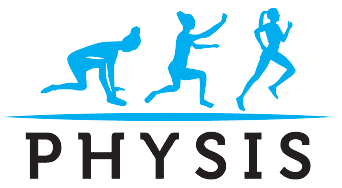Who was Vladimir Janda?
Vladimir Janda was a renowned neurologist, physiotherapist, clinician, and researcher from Prague. His extensive work in theories of muscle imbalance for orthopedic and neuromuscular conditions has earned him the title of “Father of Rehabilitation”. His personal struggles with post-polio syndrome and the subsequent difficulty with walking piqued his interest in dysfunctions of muscular and skeletal systems. He was one of the first physicians who combined medicine and therapy in a hands-on approach.
Fun Fact: He could speak five languages!!
What is Janda’s Approach
Janda’s approach is a method of examination that helps to identify the underlying causes of pain. It is a thorough study of your posture and muscle activity during motion, called “functional evaluation”. It is based on the premise that joints, muscles and nervous system work together, and that changes in one area will be reflected by compensatory changes elsewhere in the body. Janda shows that many chronic injuries/pain results from improper motor learning, i.e. your body incorrectly learning to engage certain muscles
What’s the difference between a Traditional Exam and Janda’s?
1. Structural Exam Vs. Functional Approach Traditional evaluation/exam is structurally based with a focus on goniometer measures, strength, and/or imaging such as MRI, CTscan, Xrays, etc… But Janda’s approach focuses on interactions between groups of muscles. For Example, your complaint of chronic knee pain. With a structural approach, the exam identifies limitations in range/strength/activity limitation, followed by treatment to fix those limitations. But note, this system is inherently flawed. The exam identified limitations due to knee pain not why the pain occurred in the first place. This is where Janda’s approach varies. This functional focus looks to determine why the knee pain occurred in the first place and includes a thorough exam of your posture, head to toe.
2. Evaluates the changes in the sensorimotor system Evidence shows chronic pain is a product of changes at the muscles as well as the nerves making it an interdependent system, i.e. sensorimotor system. On exam/assessment, the site of the pain will not be the source of the pain. Janda’s approach evaluates for changes in the central nervous system and its impact on muscle imbalance and pain.
3. Chain Reactions He developed theories of chain reactions to help identify the true cause of pain. The three independent chains are; the articular, muscular, and neurological chains. All 3 chains comprise the “neuro-muscular-skeletal” model.
a. Simply put, our joints are interconnected. Consider a case of elbow pain. With Janda’s approach, your clinician will evaluate the relationship from the neck to shoulder to elbow to wrist and vice-versa. Once an imbalance is identified, it’s corrected to reduce complaints of elbow pain.
b. Consider another case of low back pain. Janda was the first one to identify the chronic weakness of transverse abdominal muscles being the cause of low back pain. In all of the above scenarios, a localized exam of the knee or elbow or low back would have failed to show the true cause of pain and/or injury. Only with a detailed look at the chains of movements, we see the true cause of pain.
Who does it Help?
Janda’s approach is universally applicable to those who have a musculoskeletal injury, including, but not limited to…
Important Facts and Considerations
During the exam, your clinician will begin with postural observation of the pelvis, regardless of the area of primary complaint, to identify asymmetries. Your Clinician will evaluate the quality, sequencing/timing, and degree of individual muscle activation during a movement, to assess the coordination of all involved muscles in the movement.

